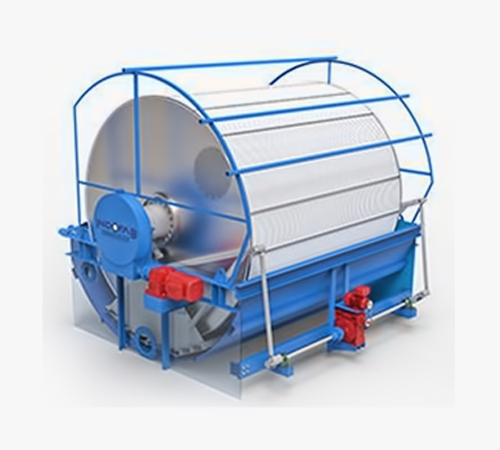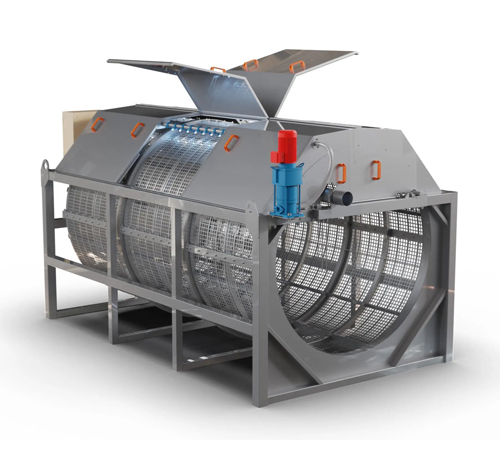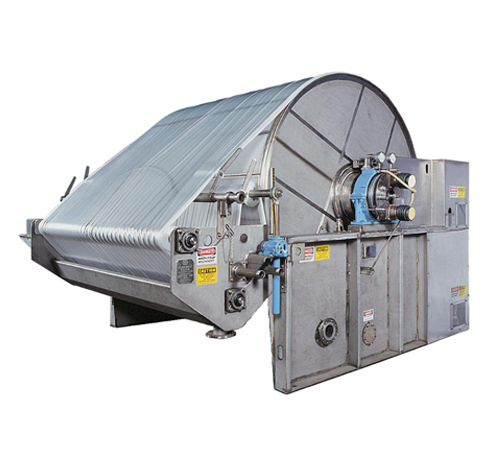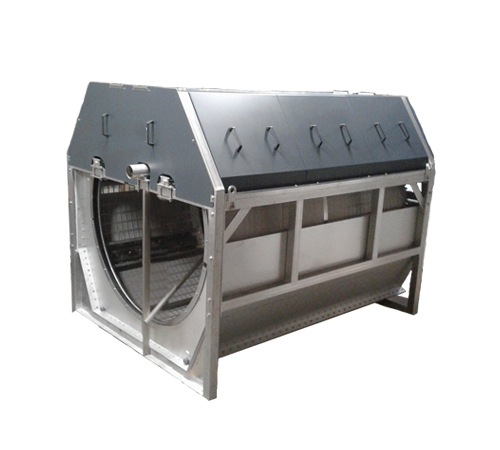Drum Filters
A Drum filter is a type of filtration device commonly used in various industrial and municipal applications to separate solid particles from liquids. It operates using a rotating drum covered with a filter medium
How It Works
Filtration Drum: The drum filter consists of a cylindrical drum covered with a mesh or other filter medium. The drum rotates slowly, and the liquid to be filtered is fed into the drum.
Filtration Process: As the drum rotates, the liquid passes through the filter medium. Solid particles are trapped on the surface of the drum, while the filtered liquid (or filtrate) passes through the medium and is collected.
Cleaning and Scraping: To prevent clogging and maintain filter efficiency, the accumulated solids on the drum’s surface are periodically removed. This is usually done using a scraper or a high-pressure water spray.
Discharge: The separated solids, known as the cake, are removed from the drum and discharged. The filtered liquid flows out of the system as the clean effluent.
Types of drum filter
Rotary Drum Filter: Features a drum that rotates partially submerged in the liquid. Used in various applications including wastewater treatment and mining.
Vacuum Drum Filter: Uses vacuum pressure to draw the liquid through the filter medium. Commonly used in chemical and mineral processing.
Pressure Drum Filter: Employs pressure to force the liquid through the filter medium, typically used for high-pressure applications.
Advantages
Continuous Operation: Can operate continuously, making it suitable for high-volume applications.
Effective Solids Removal: Efficiently removes solids, including fine particles.
Low Maintenance: The self-cleaning mechanism reduces the need for frequent manual cleaning.
High Throughput: Capable of handling large volumes of liquid with varying solid concentrations.
Applications
Waste water Treatment: Used to filter suspended solids from wastewater, including in municipal sewage treatment plants and industrial wastewater facilities.
Mining and Mineral Processing: Helps in separating valuable minerals from ore slurries.
Pulp and Paper Industry: Used to remove impurities from pulp and paper processes.
Food and Beverage Industry: Filters out solids from liquids in processes like brewing and juice production.
Aquaculture: Removes solids from water in fish farming and similar operations.




